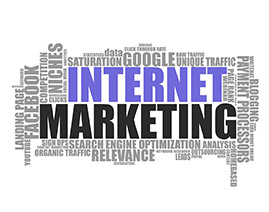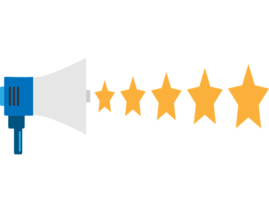Platforms And Content – The Business Model Of The 21th Century
Marketing is getting expensive – Content is not that easy
Several years ago every company tried to be at the top of the google search pages. Content Marketing was one of the most successful ways to generate additional traffic to get “easy leads”. But as every company started to make posts, blogs etc., the excess on information lead to a flood of knowledge. Content is getting harder to rank and the content-amount needed is growing exponentially. This leads to an aggregation of attention to the bigger brands. Just recently also Google announced that they will now Rank “Brand before Content” which means that the brands are a better ranking factor than the content itself.
This is also why at the beginning I mentioned that there is a platform AND content strategy needed. A single company alone can not deal anymore with the requirements to be a real “authority” on the internet. So, people need to work on collaborative solutions, so called platforms, to get their messages and their brands out in the area of short attention and big content aggregators.
The case with Google
In reality it is very interesting to see that even big companies like Google are struggling to switch from a product and service-oriented business model to an attention and platform model. With a more than 90% market dominance on searches, Google managed to be at the display of every person in the world. But when we look at the performance of attention platforms, Google lacks behind.
Their business model never really involved the community and the platform. Google tried to bring together a platform to capture more of the user’s attention, but Google+ failed after the users didn’t find the network and the content they were looking for. Maybe it is also interesting to know that every Google Mail/Google Account user was automatically also a Google+ user. So, one would assume that they should have had a huge advantage when they can access such a big user base.
Content and Attention as the new Gold-Standard
When we are looking at the current market dynamics then we see several companies spiking. All of them are connected to an ecosystem, a platform-economy and content driven business models. As an example, we can also analyze Amazon and their underlying business model.
Amazon built its brand, its attention-grabbing machine, with their online shop. Google might be the biggest search engine in the world but amazon managed to have more search queries when it comes to product searches. So, people are more likely to search at the amazon search bar instead of the google search bar to find their product of choice.
When looking at the numbers of revenue, profit and business unit statements of Amazon we will find an interesting trend. The Net-Profit margin of the product platform >amazon.com are minimal. The growing share of services in their ecosystem is driving their profit growth and made them one of the most profitable companies in the world. Amazon is great at capturing the attention of the customer and using this to offer their services at different stages of the customer journey.
What can I do? – Building a platform and content is not easy
We just learned before that even companies like Google failed at building such platforms who can really scale and grow. But even on a smaller scale it can be challenging to build a platform that reaches more than just a few hundred or thousand people per month. So I give some tips from my personal experience how such a project could work.
1 Content is “commodity”
One of the first and biggest mistakes for new platforms is to see it as a product or service they are offering and then start to monetize on it. Content CAN be monetized if it fulfills an “value adding” aspect. But in general, you have to look at it like something that just has a value as an asset but not as a product to sell.
2 Get the Vision right
Every platform needs people who fill the platform but also follow the ideas. A strong Vision, Mission and also community is needed to give everybody a possibility to identify with the platform and to give this platform the attention which is needed to let it grow.
3 It’s not about Marketing
From my experience every “marketing-only” platform never had a chance to grow big. I assume it is clear after reading the 2nd point in this list, that you need to give added value and something value adding before you start with pure sales driven messaging to your customers.
4 Grow a community
One of the most important aspects is a community. Amazon doesn’t actually have an community behind it. But it is the value proposition, the service statement and also the personal commitment which made it a virtual community. But on smaller scales much more effort should be made when dealing with communities. Regular Meetups, parties, insider-events and much more are needed to build your base and also build on top of it.
5 It is a Marathon and not a sprint
From my experience it is easier said than done. Times changed and attention and reach are hard to get. Calculate for more than just a few months to build something that actually gets traction. Platforms are tough to build, lots of different players are trying to grab the attention and also the big players are dominating the market.
6 Partners are key
When you look at building a platform, it is per definition that you need to build it together with others. This also means partners and they can be key. Bring them an added value, try to involve them or directly work together to create something bigger.
7 Prepare to fail
In my career I have seen and sometimes even accompanied a lot of these content platform business models. But to be fully frank, you need to see that there are just few projects which survive these market dynamics and can grow beyond the basics. So be prepared to fail or have a plan B ready. (Partner with other platforms, rather work together instead of competing etc.)
8 Have fun
As I said before, it is a community driven thing. If you don’t have fun with your own topic and if you only do it for business purpose, then you will also see that people don’t want to follow you. Disney is doing a great job in having fun with their community, building experiences and also involving their followers when it comes to the next steps. This can be also applied in small scales
Verdict
It is a an ever more complicated world to get your brand seen and also grab the attention of customers. This is why big corporates are shifting from products and services to a platform model where the content and attention is in the center of the value proposition. These content-driven business models capture way more from the market and enable to implement more than just one business model into an existing user-base.
If you try to build a platform, take care that you are not selling out the core community and that you are trying to monetize content which is now a “commodity” good. Try to give them a value adding core and then build business models around this core so you are monetizing your content platform on different fields. Digital Transformation is so way more than just a platform, focus on the transformational part of this change.
You May Also Like

Brand Equity – How can the credit function help?
Investing in Brand Equity is becoming an effective business strategy not only to retain customers an...

Why winning customer trust is key to startup success
Interview of Philipp Kristian, author of 'The Trust Economy’ What are the top three emerg...

Innovation-Driven Marketing vs. Marketing-Driven Innovation
Is your company adding value or are you pretending and trying to make a name for yourself? Why do I...

Why Is Corporate Identity Important For Any Business?
Corporate identity is quite similar to what we talk about our own identity, and the specifics that d...

Out-of-Box, In-the-Box, New-Box, Other-Box, No-Box
Thinking For years supporters and detractors of creative thinking in the workplace have talked about...

Pricing Strategy
In general, the pricing strategy is very important for retail companies in order to achieve the sale...

Why Content is the true north of Account-based Marketing? – Final
We began exploring the four-legs of the content strategy tool, and uncovered just why context is eve...

5 Trends and Challenges for the Agency Industry
One of the trends to continue will be brands bringing agency work in-house. As Ramchandani writes, &...

How to choose a domain name?
A domain name is the website name that people can type into their browser like >google.com,&...

How to promote your Business on Google Maps with Google Posts
Google has just rolled out yet another useful tool, especially for small business owners: Google Pos...

Tactics to increase conversion rate
ALPHA Sales System Most sales systems focuses on the presentation, objection handling and closing...

Challenges in Deep Learning technology
Although the estimated market growth for Deep Learning is $10.2 billion by the end of 2025, it has s...

Content Marketing Phooey
I agree "Content Marketing" is a VITALLY important component of the Promotional Mix and es...

On Becoming Customer Centric
On Becoming Customer Centric Some say “customer centricity” has become ...

It’s the stakeholder, stupid!
Why it took me four years to build a website... This week marked an important milestone in my profe...

UltraCreativity - "Cannot" does not exist in my vocabulary!
I’ve decided long ago that the word “cannot” does not exist in my vocabulary. For ...

Tools & Resources Every Marketer Needs To Navigate COVID-19 Crisis
It’s clear that COVID-19 has drastically altered the advertising and marketing landscape as mo...

The Hidden Truth In Creating Best Airbnb Experience
Here are Questions That I have Got This Week Around Airbnb Experience From Fellow Friends and Contac...

What is the future of Programmatic Advertising?
Data in the 21st century is like oil in the 19th century. Data is currently seen as valuable asset w...

From PR to e-PR - Future of media relations
Imagine if 20 years ago, someone told you that every organization will need accounting software, wha...

When personal brands go to war...
The start of this past weekend was highly interesting for Twitter users. It wasn’t actually a ...

Surviving and soon thriving again: what you're doing now really matters
Five weeks ago, before any of us really knew ‘how bad things would get’ I wrote on Linke...

Good Brands Sell Products; Great Brands Tell Stories
If you need to survive in this dog-eat-dog business world, then you need to connect with customers i...

Customer Experience lessons we learned and applied in our Art Gallery
WE OPENED OUR ART GALLERY IN 2011 We learned a lot of Customer Experience lessons in the 7 years si...

Why Content is the true north of Account-based Marketing? - Part I
At a recent conference, I was asked rather unexpectedly by a senior business executive, “What...

"MIND" Your Image
It’s always said, what you focus, expands! It’s pretty common for many of us to have en...

Why Content is the true north of Account-based Marketing? - Part II
"A wealth of information creates a poverty of attention." - Herbert Simon, Economist Just...

Premium Story- Customer Experience
Every three, four years I have the pleasure and privilege to choose and pick a new car. You can imag...

How to Fuel, Shape and Scale Creativity
It is well established by now that creativity is one of the main differentiators between s...

Artificial intelligence in E-mail marketing
Artificial intelligence, in the broadest sense, refers to a human-like ability to perceive, understa...

10 e-commerce user experience must-haves
They say you never get a second chance to make a first impression, and in the world of e-commerce, f...

Stop Talking About and Start Driving Digital Marketing Transformation
In marketing, and right across business, we often talk about the need for ‘digital transformat...

Want to build your personal brand? Then STOP being #antisocial on social media
Have you ever been to a networking event where you register your name, put your name card in the &qu...

9 Ways to Transform the Healthcare Experience with Conversational AI
Introduction Conversational AI is a pivotal aspect of digital transformation in the healthcare indu...








Benjamin Talin
Founder & CEO, MoreThanDigital
Series entrepreneur since he successfully founded the first companies at the age of 13. He has always questioned the "status quo" and is committed to innovation, disruption, and new ideas. As an international keynote speaker, a consultant for companies and states, lecturer and published digital transformation expert, Benjamin tries to promote the topics of digitization, digital transformation and innovation internationally. He is also a Board Member for the upcoming University of Digital Science in Berlin and Digital Society Initiative, University of Zurich. As a Member of the Global Panel of Massachusets Technology Review, he is working together with leading executives around the world to share knowledge on technology, trends and the impact on the businesses. Also, he is an advisor for political parties and institutions, shares the knowledge as a keynote speaker on a government level and also consult in building a political framework for a digital world.